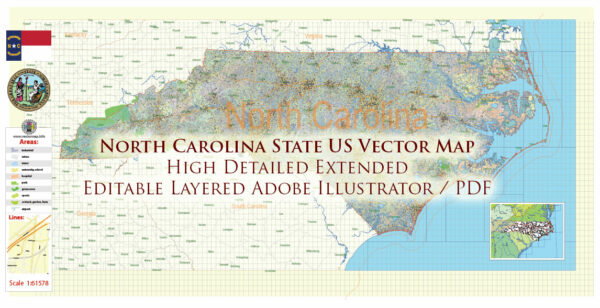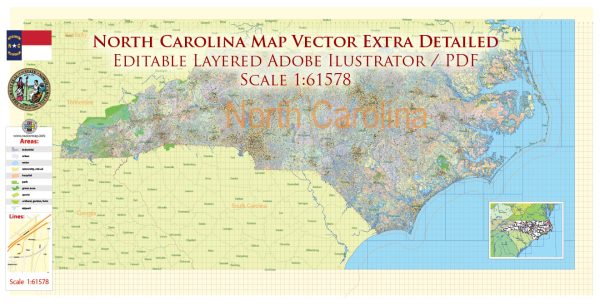North Carolina, a southeastern state in the United States, has a diverse and growing economy that relies on various modes of transportation, including maritime and air transportation.
Maritime Transportation:
- Ports and Harbors:
- The Port of Wilmington: Located on the Cape Fear River, it is one of the state’s major ports, handling containers, bulk cargo, and general cargo.
- Morehead City Port: Situated on the Atlantic Ocean, it specializes in bulk cargo, including phosphate, steel, and forest products.
- Inland Waterways:
- The Intracoastal Waterway runs along the eastern side of the state, providing a navigable route for commercial and recreational vessels.
- Shipping and Trade:
- North Carolina’s ports play a crucial role in facilitating trade, connecting the state to international markets.
Air Transportation:
- Airports:
- Raleigh-Durham International Airport (RDU): The primary airport serving the Research Triangle Region, offering domestic and international flights.
- Charlotte Douglas International Airport (CLT): One of the busiest airports in the U.S., connecting North Carolina to major global destinations.
- Piedmont Triad International Airport (GSO): Serving the Piedmont Triad region with domestic flights.
- Aerospace Industry:
- North Carolina has a growing aerospace and aviation industry with companies involved in manufacturing, maintenance, repair, and overhaul (MRO), and research and development.
- Military Presence:
- Military installations like Seymour Johnson Air Force Base and Marine Corps Air Station Cherry Point contribute to the state’s aviation sector.
- Research and Innovation:
- The state is home to research institutions and companies engaged in aviation and aerospace innovation.
- Cargo and Logistics:
- Airports in the state facilitate the movement of cargo, including high-value and time-sensitive goods.
- General Aviation:
- There are numerous general aviation airports supporting private and recreational flying across the state.
Challenges and Developments:
- Infrastructure Development: Ongoing efforts to improve and expand transportation infrastructure, including port facilities and airport runways.
- Economic Impact: The maritime and air transportation sectors contribute significantly to the state’s economy, providing jobs and fostering economic growth.
- Environmental Concerns: As with many states, there is an increasing focus on sustainable and environmentally friendly transportation practices.
In summary, North Carolina’s maritime and air transportation sectors are critical components of the state’s economy, supporting trade, tourism, and various industries. Ongoing investments in infrastructure and technology contribute to the continued growth and efficiency of these transportation networks.



 Author: Kirill Shrayber, Ph.D.
Author: Kirill Shrayber, Ph.D.